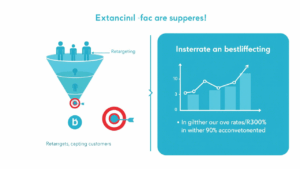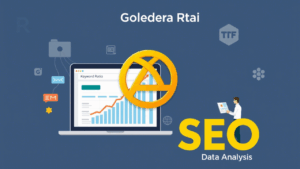Relax, you’re not alone. Running and managing online ads can seem complex, but don’t worry, this guide will simplify proven strategies on how to create winning digital marketing campaigns for your business.
You’ll learn how to plan, prepare, launch, and optimize your campaigns like an expert, for maximum effectiveness and reach your business goals.
Whether you’re working towards brand awareness, sales increase, or engagement, this book will guide you to build the optimal digital marketing strategy that converts clicks into loyal customers.
So, let’s begin!
But What Is a Digital Marketing Campaign?
A digital marketing campaign is like a business plan that enables you and your company to interact with a pool of new potential customers online. You can identify and reach special groups of audiences related to your company through a digital marketing campaign on various online platforms.
Now, how does it actually assist your business? Well, it actually varies on what the company goal is. It can be creating more brand awareness for people, getting more people to come to your site, selling more, or even creating a stronger customer relationship for the long term.
When you are establishing a digital marketing campaign, it is sort of like making a roadmap. The first step is to define who you are talking to, what are your business goals, and what are the tactics (like SEO, PPC, social media marketing, and content marketing) that you want to use in order to meet your business goals.
How To Get Started With Creating a Digital Marketing Campaign
So now that you have an idea of what a digital marketing campaign in brief is, the next thing to do is learning how to start getting prepared and carrying out a successful digital marketing campaign.
There are some grand steps and strategies that you have to do so as to come up with successful digital marketing campaigns, so now we are going to dissect and learn everything you need step by step.
Step 1: Set Your Marketing Goals
Alright, alright, so let’s break it down step by step. The very first thing that you need to do when you start working on a digital marketing campaign is determine why you’re doing it in the first place. There are so many potential goals, but over-extending yourself, definitely won’t benefit you.
So ask yourself: Do you want to drive more conversions, grow an email list, get more traffic to your site, rank for more terms, or maybe just get more followers?
Now, when it comes to actual goals, there are a few buckets you should think about: brand awareness, additional sales, lead generation, and growing your social following.
Some goals are more straightforward and measurable than others. For example, it’s simpler to measure new email subscribers compared to attempting to know how many people already familiarize themselves with your business or brand.
However, here is the catch: You should always try to derive your goals based on real data as much as you can.
Let’s consider some examples of realistic goals so that you may have a clearer idea:
- Increase brand visibility by getting 5 mentions from big news sources or websites.
- Increase search engine traffic by 5,000 monthly visitors in 45 days.
- Double social media followers to 10k by the end of the year.
- Increase sales by 50% by adding an abandoned cart sequence to your eCommerce site.
- Increase 500 new qualified email subscribers in 30 days.
Each goal you have should be accompanied by a plan of action. If, say, you’re attempting to increase organic traffic on your website, your plan should include revisiting your existing content, keyword research, rewriting old posts, creating new ones, and even requesting backlinks and sharing your content on social media.
And here’s the best part: You can run as many online marketing campaigns as you want. But, and here’s a BIG BUT, make sure each of them has a specific, measurable result.
In that way, you can drill into your data later, see what’s working, and refine your digital marketing strategy for next time. It’s just like a recipe for success: mix, taste, adjust, and repeat.
Step 2: Identify Your Audience
Before you set out on your initial digital marketing campaign, you have to know precisely who you are talking to.
Now, if you find yourself scratching your head wondering who these people are, it is time to put on your detective hat. The best way to approach this is to create a buyer or customer persona.
Essentially, you need to imagine a certain profile of your target customer who would actually enjoy doing business with or buying from you.
To achieve this, consider these factors first:
- Their Job: What does their work involve?
- Income: How much money do they earn?
- Family Size: Do they have a large family to support or are they flying solo?
- Age: How many candles sit atop the cake?
- Hobbies: Post-work leisure activities perhaps?
And when you’re creating this ideal customer or buyer persona, don’t stop there. You need to dig deeper into:
- Online Habits: What else are they surfing?
- Goals: Why are they coming to your site?
- Fears and Desires: What keeps them up at night, and what gets them excited?
Now, if you are new to this game and it seems too scary, do not worry. You can cull goldmine information regarding your target audience from your existing data. And for this Google Analytics is going to be your best friend here.
The data that you need to keep in mind at this juncture is:
- Age
- Gender
- Location
- Website Navigation Patterns
- Favorite Content Types
Put all of this treasure data together into a document or user profile. You can even add some photos to make this fictional individual look like real life for anyone on your team working on this campaign.
And if you’ve got more than one type of audience, do this strategy multiple times for each audience. Create different buyer personas for each group you’re targeting. It’s like adjusting your message for each friend individually at a party for example, which will make everyone feel special.
Step 3: Topic and Keyword Research
Now once your campaign goals are crystal clear, and you’ve got your target audience mapped out, it’s time for the next move, which is diving into the keywords and topics.
Whether you’re creating an SEO strategy, a PPC ad campaign, crafting emails, or a Facebook Ads strategy, keyword research is going to be your secret sauce.
What then is the agenda here? You have to put yourself in your would-be customer’s shoes and wear their hats in thinking what keywords they’d key into Google search (or whatever platform they use) in searching for your goods or services.
Start to write down what comes to mind, brainstorm around the most likely keywords that you would expect to key by your would-be buyers. Plug that brainstormed lot into keyword tools.
Look for keywords and phrases that have good volume but aren’t too competitive.
Now, beyond the old Google search, here are a few ninja keyword brainstorming strategies:
- Reddit Dive: Go deep into Reddit, look for your niche, and see what related discussions there are about your subject.
- Question Hunt: Visit Answer the Public. It’s kinda a goldmine for question-based keywords.
- Google’s Tool Kit: Hit Google Keyword Planner. It spilling the beans about related keywords.
Once you have your initial list of keywords, take those bad boys and insert them into something like Semrush.
This keyword behemoth will give you a report for each keyword, like search volume, competition, and other morsels of goodness.
By the end of it, you should have yourself sitting pretty with a kickass keyword list for SEO and PPC, ready to implement in your campaigns.
Step 4: Competitor Analysis
Time to put detective hat on once again and conduct a spying session!
Having now determined your goals, target audience, and keywords in hand, it’s time to peek over your competitor’s fence.
These are a couple of things to look out for while sneaking around your competitors:
- What are they doing? Get a breakdown on the products, services they’re advertising.
- On which platforms are they working? Jot down the platforms and mediums on which they’re soliciting.
- On which content are they soliciting? Try to take a look at their method, are blogs, videos, or whatever is their emphasis?
- Learn about their ads. What kind of ads are they advertising, and what creatives and strategies are they using?
- What is their price point? Are they taking a high-end, budget, or in-between approach?
- What customers are saying about their products and services?
And here’s the treasure trove: take a cue from their actions. Find out what is working for them best, steal the best and make it yours.
Always put your own twist on it, you don’t want to copy them exactly, you want to do better with your campaigns yourself, and come up with your own strategies off of what you have learned through competitor research.
There are some pretty neat tools that you can utilize to snoop on your competitor’s campaigns, tools like the Facebook Ads Library and Google Ads Library are free and are pretty powerful.
These are the ninja weapons to spill the beans on your competitor’s paid ads, and you can even get some ninja tricks to steal their keywords.
Below are some other tools to compare with your competitor:
Step 5: Choose Your Digital Marketing Channels
Once you’ve defined your campaign goals and have a solid familiar sense of your people, it’s now time to choose the perfect platforms on which to run your campaigns. To start with, choose one or two platforms that serve your key purpose and offer you the greatest outcome from day one.
Look now at your choices. Online marketing has you to work with many channels.
The A-listers i.e. the most popular and most successful ones are, SEO, PPC, social media marketing, email marketing, affiliate marketing, and influencer marketing.
- SEO (Search Engine Optimization): It’s all about making your website a magnet for search engines so more people can find your business organically, by searching on Google for example.
- PPC (Pay-Per-Click): This will provide you with the fastest results with targeted ads that drive instant traffic.
- Social Media Marketing: Spreading the word and reaching out directly to massive groups of people on social media platforms like Facebook, Instagram, and X(Twitter).
- Email Marketing: Reaching your audience in their email inbox with news, promotions, and engaging content.
- Affiliate Marketing: Partnering with other online marketers who will distribute your products or services for a share of the profit.
- Influencer Marketing: Collaborating with social media influencers to have your brand shouted out to their crowd of followers.
So for example, if your primary goal is to have more individuals become aware of your company, social media and influencer marketing are the best for you.
Social networking websites enable you to communicate directly with a broad base, and influencers who are relevant to your business can propagate your message to their audience, who can potentially become customers.
On the flip side, consider that you are interested in driving more traffic to your website. In that case, you would need to aim at SEO and PPC.
SEO works behind the scenes to make your website rank higher on search engine pages, whereas PPC brings instant traffic through targeted advertising.
As you can see, there are a number of channels you can draw from in order to meet your objectives. The key is to select the ones that best suit your goals and target audience, so you know your goals will be met.And here’s a pro-tip: You can always include additional channels as your campaign scales to grow by expanding your reach.
Step 6: Set a Budget For Your Campaigns
Alright, let’s get down to it when it comes to budgeting for your online marketing campaigns.
It’s not just the ads you are paying for, but also all the external costs of paying someone to create creative content (ads, video, landing pages, etc.) or even to execute all your campaigns on your behalf.
Having a grasp of the projected costs of your online marketing campaigns is very important to developing a good strategy and activities. As you’re doing your budgeting, keep in mind the following reminders:
- Budget Smarter: Allocate your budget by channel based on your goals. You can set aside budget for social media advertising, especially Facebook Ads, if you need more people to know about your brand.
- Testing Budget: Keep some money aside for testing. Before launching the full campaign, run tests to make sure everything’s working and find your best creatives, audience, etc.
- Tool Costs: It’s not just about ads and creative costs. You’ll need to pay for tools that will help with managing campaigns, as well as tracking tools.
Prioritizing your budget immediately is like having a budget roadmap. It will direct you and avoid financial shocks.
Step 7: Plan Content
Regardless of the campaign types that you’re utilizing, having a good content plan is the most critical part of your company.
Your content strategy determines what kind of content to use, who will make it, and how each piece of content fits into your digital marketing plan.
Different campaigns require different types of content. Here are some examples:
- Want more organic search traffic? Then you need to create a series of blog posts.
- Want to run Facebook or Instagram ads? Then get ready to create ad images, videos and landing pages for visitors.
- Video marketing campaign? Simply making, editing, and publishing videos on a consistent basis.
And this is the catch: your content marketing campaign is a dynamic organism. It adapts on performance. Maybe one pic of a particular type performs better than others, or a given headline drives 10% more conversions.
Your audience targeting goal remains the same (going after your ideal customer), but your content shifts depending on what your audience responds to best.
Content creation, optimization, and flavoring is an ongoing process in each digital marketing campaign.
Step 8: Launch Your Campaign
Lastly, you finally get to launch your digital marketing campaigns.
Here’s a pro tip: When starting with your pay-per-click ad campaigns, don’t go in with a full budget until you have experimented a little bit.
For example if your budget is a $100 per day spend on Facebook Ads, you may wish to start lower, at a budget of perhaps $50 per day, and then raise it when you start to see returns.
Why? Well, for a couple of good reasons:
- Safety: It does this in such a way that if there’s something wrong with the setup or the funnel, you’re not going through your whole budget. You’re able to act in time and fix whatever it is that needs fixing without taking too much cash out of pocket. Safety first!
- Algorithm Time: Let algorithms do their job and find you the most likely audience. With a smaller initial budget, it gives them room to gather information and optimize delivery for maximum impact.
Now, if you’re in the content marketing game, instant feedback might be challenging. But don’t worry! Keep an eye on how your audience is vibing with your content, watch for comments, social shares, conversions, and the time they spend on your content.
Once you’ve got the hang of things and notice what campaigns are working, it’s time to bet big. Review statistics on the ROI of every one of your campaigns, and move the budgets into the successful ones. Really you’ve got to spend where it matters.
Step 9: Analyze and Optimize Your Campaigns
Online marketing campaigns have a lot of useful data to track. There’s more to your digital marketing campaign than just launching and walking away.
The real value is analyzing campaign performance so that you can improve, adjust, and grow. Campaign performance optimization is crucial, and you should never leave your campaign running without tweaking it over time.
Once you have analyzed your campaign, you can tweak what needs changing, whether it’s new content, testing, targeting, or adding fresh creatives.
Step 10: Iterate and Scale
Running a marketing campaign doesn’t mean you stop at launching it. You need to assess what worked, optimize what’s working, and scale it accordingly. Continue your testing and improving process throughout your campaigns to reach the best possible results!




